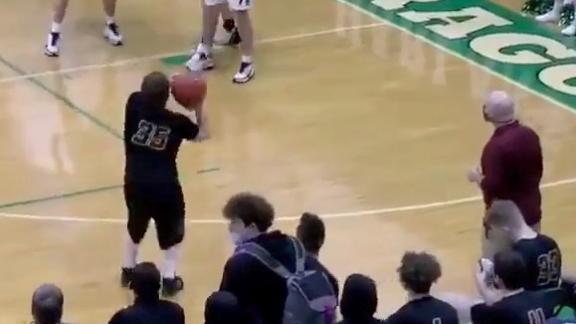Congressional hearings. Grand juries. Teary-eyed confessions. Funny how the steroids era seems so 2005. The leagues that went through the worst pain emerged with the smartest testing policies. But check the fine print -- those cat-and-mouse games are still at play.
NFL's Lockout Loophole
Roughly 30 percent of NFL tests take place in the off-season, trailing the U.S. Anti-Doping Agency's 66 percent out-of-comp rate for its athletes -- including Olympians -- but far surpassing MLB's 4 percent record. But the NFL's labor strife may become a boon for dopers. Sure, the league has talked with the World Anti-Doping Agency about future policy, including an HGH blood test. But with no testing during the lockout, there's no deterrent to PEDs. Also, says Howard Jacobs, an attorney who has repped dozens of athletes in PED cases, if a player proves he doped only during the lockout, "the league will have a hard time retroactively applying its new drug policy."
Drug Tests for most recently completed season
Eligible athletes/In-season tests/Out-of-season tests
MLB: 1,200/3,609/138
NFL: 2,500/10,000/4,000
NHL: 690/1,500/no off-season program
NBA: Does not disclose
NASCAR: Does not disclose
Stern's Brick
When it comes to doping policies, NBA commish David Stern has mastered the no-look. "There's a little too much holier-than-thou stuff going on," he said recently. "We are not on some kind of a witch hunt." Or any hunt, really. The NBA doesn't test year-round and sets a max of four tests per year unless there is suspicion. Its penalties are the lightest in major pro sports: First offenders (like O.J. Mayo) draw a 10-game ban; a second time gets 25. By contrast, first-time MLB dopers miss 50 games, NFL players lose four and NHLers sit 20. U.S. Olympians follow the strictest rules: First offense draws a two-to-four-year ban and a second could end a career. They also forfeit results and earnings from when they were doping.
MLB's Attention Deficit
MLB has come further than any sport because, well, it had the furthest to go. Now its drug-testing policy is jacked like a desperate DH. It includes a three-strike rule that culminates in a lifetime ban, an internal investigations team to track down drug cheats and a ban on 58 separate uppers. Where it whiffs is in off-season testing and in allowing 105 players to have "therapeutic use exemptions" for ADHD medications, which WADA bans because they are stimulants. That means 9 percent of MLB players take drugs that only about 5 percent of U.S. children need.
Mixed Signals in Minnesota
Forget the Barry Bonds trial. The biggest PED case in the country was just decided in Minnesota. In 2008, Vikings tackles Pat Williams and Kevin Williams flunked drug tests after taking a supplement called StarCaps. In court to get their suspensions lifted, the pair proved that the NFL withheld information that the product contained a banned diuretic. The judge accused the NFL of placing "the health, safety and welfare of its players in jeopardy so that [it] could play a game of gotcha." The suspensions stuck, but the players won two key battles: The case was heard in state court, showing that players have the right to sue in those jurisdictions; and the NFL was found to have broken a state law requiring employers to give drug test results within three days. Athletes in all sports now know that states' rights trump their own leagues' rules.




